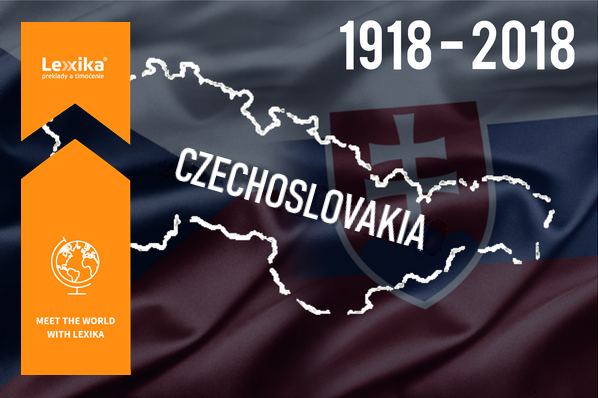One hundred years of friendship – Happy Birthday, Czechoslovakia!
LEXIKA 29.10.2018
Meet the World with Lexika
Reading time: 2 min.
29.10.2018
Meet the World with Lexika
Reading time: 2 min.

On 28 October 2018, we celebrated the centenary of the first common state for Czechs and Slovaks. Although the union between these two states no longer officially exists, we can comfortably say that unofficially it still prevails. Nowadays, Slovakia and the Czech Republic live their own lives independently, on their own accounts and answerable only to themselves.
However, the mutual respect and affection between the Czech Republic and Slovakia can be seen not only in politics but also in culture, literature, language, history, as well as socially, professionally and even in private lives. Many countries around the world envy the strong bonds between the Czech Republic and Slovakia, states invisibly linked as if by an umbilical cord.
To commemorate Czechoslovakia’s centenary, we will tell you about how it all happened. Make yourself comfortable and enjoy a trip to the past.
What led to the birth of Czechoslovakia?
It is 1914. Archduke Franz Ferdinand of Austria-Este was assassinated in Sarajevo and died with his wife Sophie. This event resulted in the outbreak of World War I. At that time, attempts had already been made to create a common state of Bohemia and Slovakia, by founding a Czechoslovak Legion in the Russian army. In 1915 began the first serious discussions about an independent state, led mainly by Tomáš Garrigue Masaryk and Milan Rastislav Štefánik. In February 1916, the Czecho-Slovak National Council was officially established in Paris.
On 1 May 1918, a resolution supporting the right to national self-determination and the idea of founding a Czecho-Slovak state was adopted in Liptovský Svätý Mikuláš. On 22 May 1918, in Great Britain, Lord Robert Cecil recognized the right of the Czecho-Slovak nation to independence. Eight days later, in the USA, representatives of the Slovak League of America, representatives of the Czech National Association and T. G. Masaryk, the President of the Czecho-Slovak National Council, signed the Pittsburgh Agreement on uniting the Slovaks and Czechs in an independent state. On 3 September 1918, the US government accepted the state of war between Czechoslovakia and the German and Austrian empires. Consequently, on 18 October 1918, the Czecho-Slovak Declaration of Independence, drawn up by T. G. Masaryk, was issued in Washington.
The foundation of Czechoslovakia
The big day came on 28 October 1918. The National Committee Manifesto announced the inception of the Czechoslovak National Committee in Prague. From that day, this committee assumed government and passed the first law on founding the Czechoslovak Republic. The manifesto was signed by Vavro Šrobár (the only Slovak), Anton Švehla, Alojs Rašín, František Soukup and Juraj Stříbrný. This act officially founded the Czechoslovak Republic.
A few days later, during a meeting in Martin on 30 October 1918, the Slovak National Council (SNC) was created and it adopted the Declaration of the Slovak Nation. In the declaration, the SNC pronounced itself in favour of a common republic of Czechs and Slovaks.
On 13 November 1918, the National Committee enacted a temporary constitution, aiming to enshrine the fundamental law and the operating principles of the supreme state authorities as soon as possible. In less than two years it was replaced by the official constitution, called the Constitutional Charter of the Czechoslovak Republic, which came into force on 6 March 1920.
The saddest day connected with these events came on 4 May 1919. Milan Rastislav Štefánik tragically died in an air disaster near Vajnory airport in Bratislava. Together with Edvard Beneš and Tomáš G. Masaryk, he greatly contributed to the birth of the independent Czechoslovak Republic.

We understand that when people communicate better, everything runs more smoothly, so we’ve made it our mission to help you get the best out of your business.
Share it!